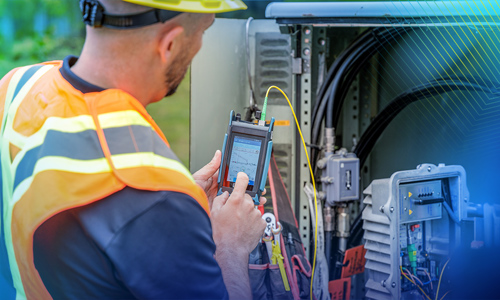Mastering compatibility and interoperability in data centers for 400G and beyond upgrades
Upgrading to 400G and beyond is an ambitious yet critical milestone for data centers. As we move towards faster data transmission rates, the success of these upgrades hinges on two key factors: compatibility and interoperability. These ensure that new and existing components work seamlessly together, preventing costly downtime and performance issues.
Compatibility: ensuring a cohesive system
In the fast-changing context of data center technologies, compatibility is crucial. It ensures that various components—regardless of manufacturer or vendor—function harmoniously within the same network. Without compatibility, data centers face the risk of equipment conflicts and suboptimal performance.
Even though optical electronic components may be made to standard-based specifications (such as IEEE), a transceiver from one vendor, for example, might not work correctly with that from another. This leads to data transmission errors. Rigorous testing of fiber-optic cabling and transceivers is thus essential to verify that different components can coexist and function efficiently. This proactive approach prevents issues before they arise, which represents significant savings in terms of time, resources… and credibility.
Interoperability: integrating new and legacy systems
Interoperability takes compatibility a step further, focusing on the seamless integration of various systems and components within a data center. As data centers upgrade to 400G and beyond, they often integrate new technologies with existing systems. This integration can be challenging, as legacy systems may not be equipped to handle the speeds or signal types of newer technologies.
Testing for interoperability ensures that new components can operate with existing ones without degrading performance. It identifies potential issues early, allowing for timely resolutions that maintain network reliability and efficiency.
Tackling the fiber-dense future
As data centers prepare for higher transmission rates driven by the new bandwidth boom (think generative AI, machine learning, IoT), the density of fiber within these facilities is ramping up significantly. This shift makes testing a critical requirement for ensuring network reliability and uptime.
Technicians must manage, store, and share vast amounts of test data. Quick access to this data is vital for effective upgrades and fault resolution. It enables informed decision-making and promotes smarter network construction and management.
Enhancing testing efficiency
Connected test systems and cloud-based platforms such as EXFO Exchange are revolutionizing testing efficiency in data centers. Such innovations provide real-time performance data and analytics, offering unprecedented visibility and control over construction and upgrades. Network executives and managers can track job progress across field teams, accelerating processes without sacrificing quality.
For technicians, versatile and user-friendly test tools designed for data center applications, such as high-speed testers, dedicated OTDR and OLTS test sets as well as inspection scopes, are indispensable. These tools allow for comprehensive testing of both physical cabling and network transmission. Automatically pre-configured settings yield clear pass/fail results, ensuring that testing is both efficient and accurate.
A connected test ecosystem centralizes and organizes results via the cloud, facilitating first-time-right system acceptance in alignment with rigorous industry standards such as IEC, TIA, and IEEE. This foresight in connectivity, design, and testing future-proofs test equipment, ensuring that data centers are well-prepared to handle the transition to higher transmission rates.
The economic imperative: avoiding costly downtime
The upgrade to higher speeds like 400G and 800G is not just a technical necessity but an economic imperative. Incompatible or underperforming components can lead to costly downtime, severely impacting an organization’s operations. Ensuring compatibility and interoperability through rigorous testing helps avoid these pitfalls, ensuring that data center upgrades deliver the intended improvements in performance and capacity.
Conclusion
The journey to 400G and beyond demands meticulous attention to compatibility and interoperability. By prioritizing these elements and leveraging advanced testing solutions, data centers can achieve seamless upgrades, maintain optimal performance, and future-proof their infrastructure against the demands of the digital age.
In an era where rapid technological advancement is the norm, ensuring that every component works together harmoniously is not just a best practice—it’s a necessity.




